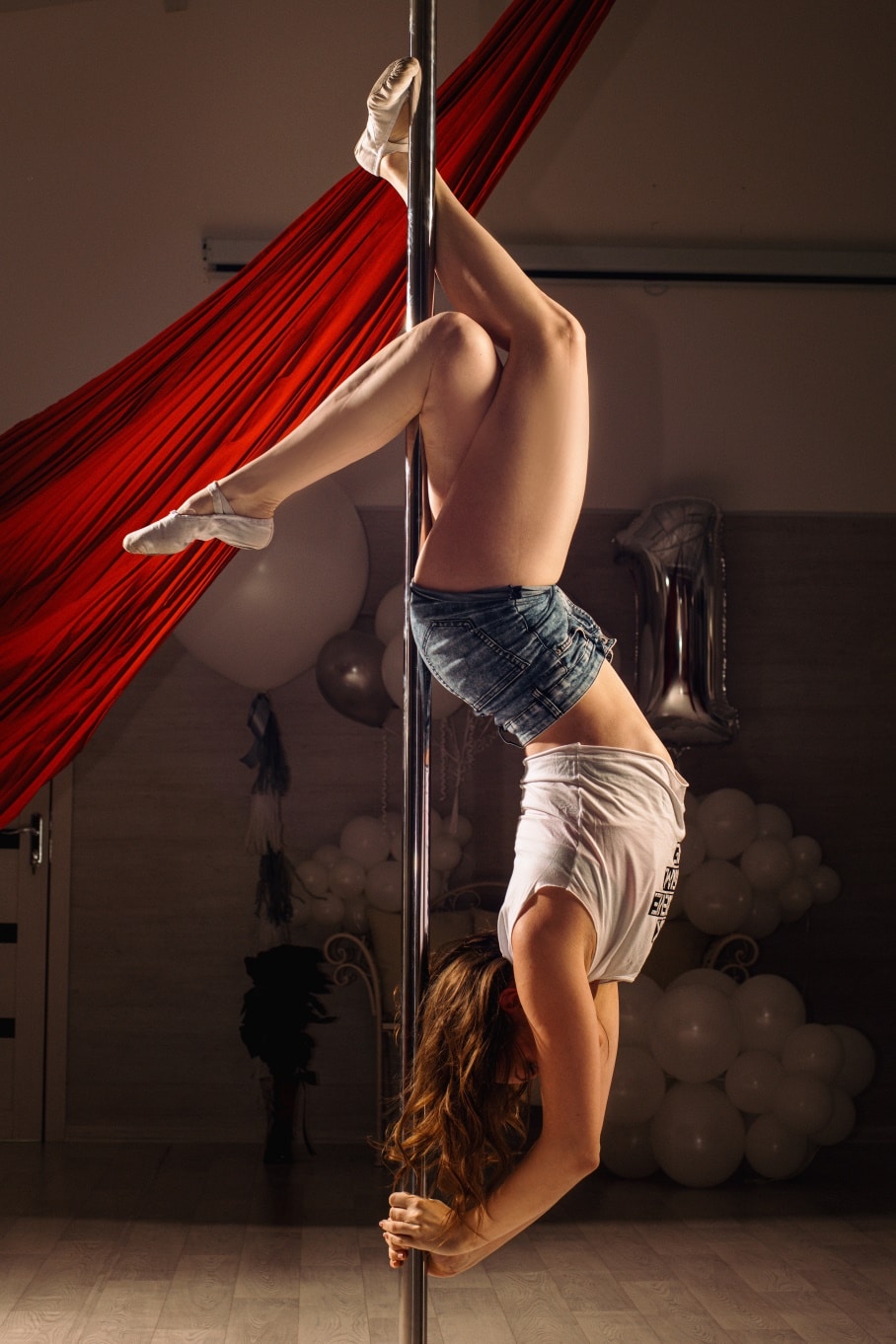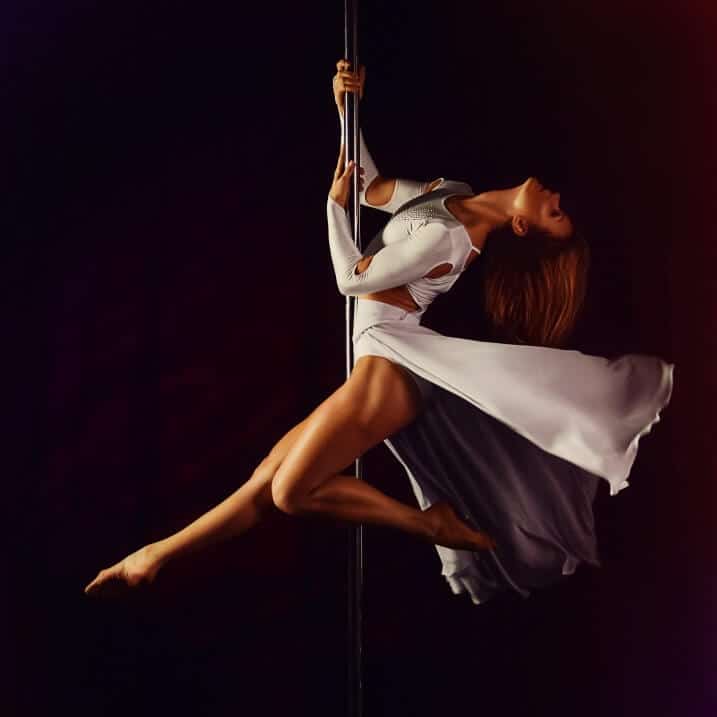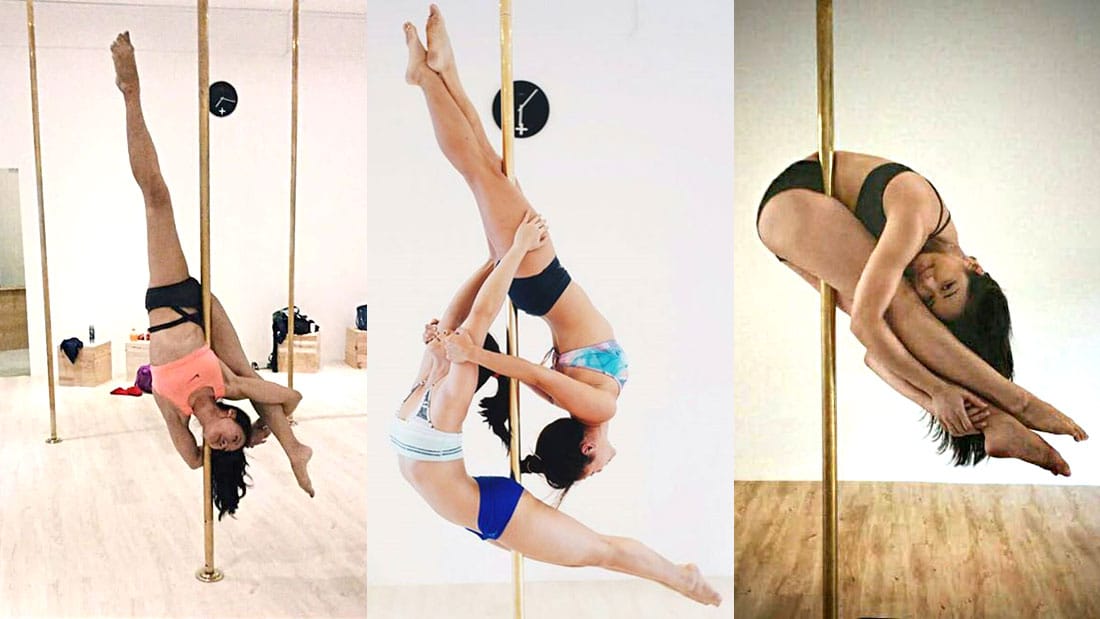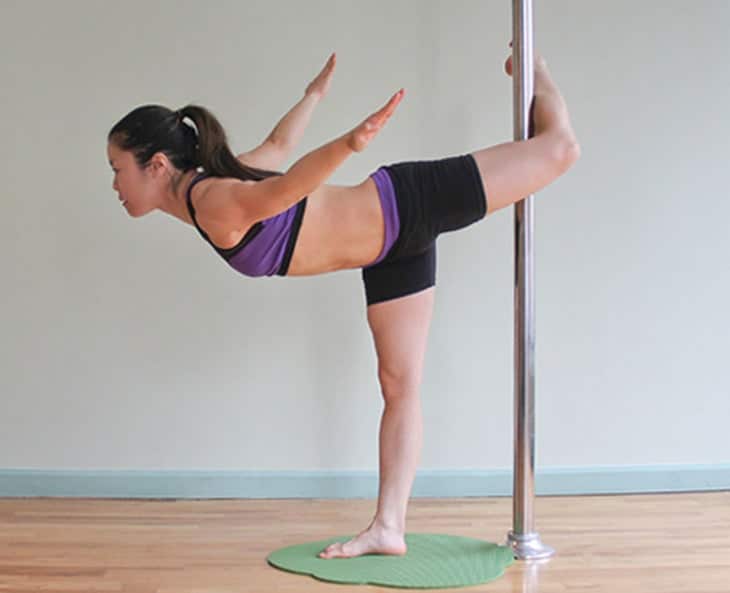A trademarked yoga exercise program called Polga (pole yoga) incorporates movements of pole fitness practices with positions from Hatha yoga. While maintaining the peaceful and soothing features of yoga, the vertical pole exhibits a fun element and helps with alignment, strengthening, and stretching the poses.
At Kansas City in her yoga classroom, Carla Mock, a yoga instructor, invented Polga. But the fundamental idea is nothing new. Mallakhamb is an ancient Indian sport that dates back to the 12th century where gymnasts perform yoga poses along with other feats while hanging from a vertical pole.
On a standing or hanging wooden pole or cane, the practitioner of the Indian traditional sport and also the training technique known as mallakhamb executes gymnastic and aerial yoga poses and wrestling holds. It can be done while hanging on a rope. Mallakhamb is said to have been the birthplace of pole yoga or pole dancing in modern times.
For the one-hour Polga courses teaching, instructors must be certified by Polga Fit. Polga is made to be suitable for all levels of fitness. Classes offered by Polga range in style and intensity between the power class and one that emphasizes stretching, bending, and relaxation.

Men are starting to realize the advantages of using the pole for exercise, even if pole yoga practices like Polga, pole fitness, and pole dancing primarily draw mostly female students. The following are a few of these advantages:
- Toned glutes, legs, shoulders, arms, and abs
- Better posture and body alignment
- Strengthened core
- Enhanced motion range
The pole may be used as a prop to increase the stretching in any yoga posture or to keep the body steady in position.
Pole fitness and Pole Yoga both call for a lot of stamina, flexibility, and focus. Many pole-based movements resemble popular yoga positions almost perfectly. One can develop the flexibility and strength necessary to do challenging stunts with the pole by engaging in yoga training.
Pole dancing develops powerful core muscles in addition to upper body strength. If you have to ascend, rise your feet, or support your weight, you employ your lower back and abdominal muscles to complete the task. These exercises are ideal for strengthening the core: Tie-up, spin. Pole dancing works out the entire body. Flexibility is also increased, and it combines weight training with cardiovascular exercise. Pole dancers engage in acrobatic maneuvers by suspending or propelling their weight around the metal pole. Even just trying to climb a pole takes great strength.
Pole yoga is a total physical workout that uses only your body weight and helps to notify the arms, shape the abdomen, lighten out the chest, as well as shape the back! Better alignment, which is crucial for life, is brought about by a powerful core. Pole yoga places a lot of emphasis on muscle mass while most sports emphasize lower body strength. Even though most women aren’t inherently strong, we employ training and workout to make you stronger each week. Pole yoga is a fantastic alternative exercise style since it combines cardio and strength.
Pole yoga is effective for shedding pounds; in fact, it’s wonderful to practice doing so without even noticing. Because pole fitness involves a full-body workout, it is possible to lose weight there.
Additional benefits of pole yoga for the lower body include ascending the pole and then supporting oneself while performing hands-free techniques. Pole presses are extremely useful for toning your legs while pole dancing.
A beginner-medium level should attend two classes per week, that is the optimal frequency to quickly develop skills and strength regardless of whether you are athletic. At first, if you have never been used to physical exercise, it could be a smart option to attend just one lesson per week.
A love affair with pole yoga can happen at any time. There are students here right now ranging in age from 14 to 60. There are no pole kid groups here, but 12-year-olds and older are welcome.
It might be challenging to do pole yoga without any workouts, regardless of the style you choose to practice. You must determine which stretches will benefit your pole yoga the most once you have a clear understanding of how many there are in the world.
You can practice in combination with your preparation in the yoga studio or you can thoroughly train pole yoga at home by yourself. Additionally, it is incredibly practical because you get to decide how much and when you train, and you don’t waste time driving.
During pole yoga practice, all beginning pole dancers usually encounter some bruising, muscular aches, and minor friction burns. Because of this, it’s wise to wait a week between pole exercises to give your body time to recover.
Numerous reports claim that the annual salary of a pole dancer ranges from $43,860 to $65,450. You should budget between $70 and $100 per hour if your contract with a club calls for you to work a certain amount of hours a week (or a fixed amount of performances).




